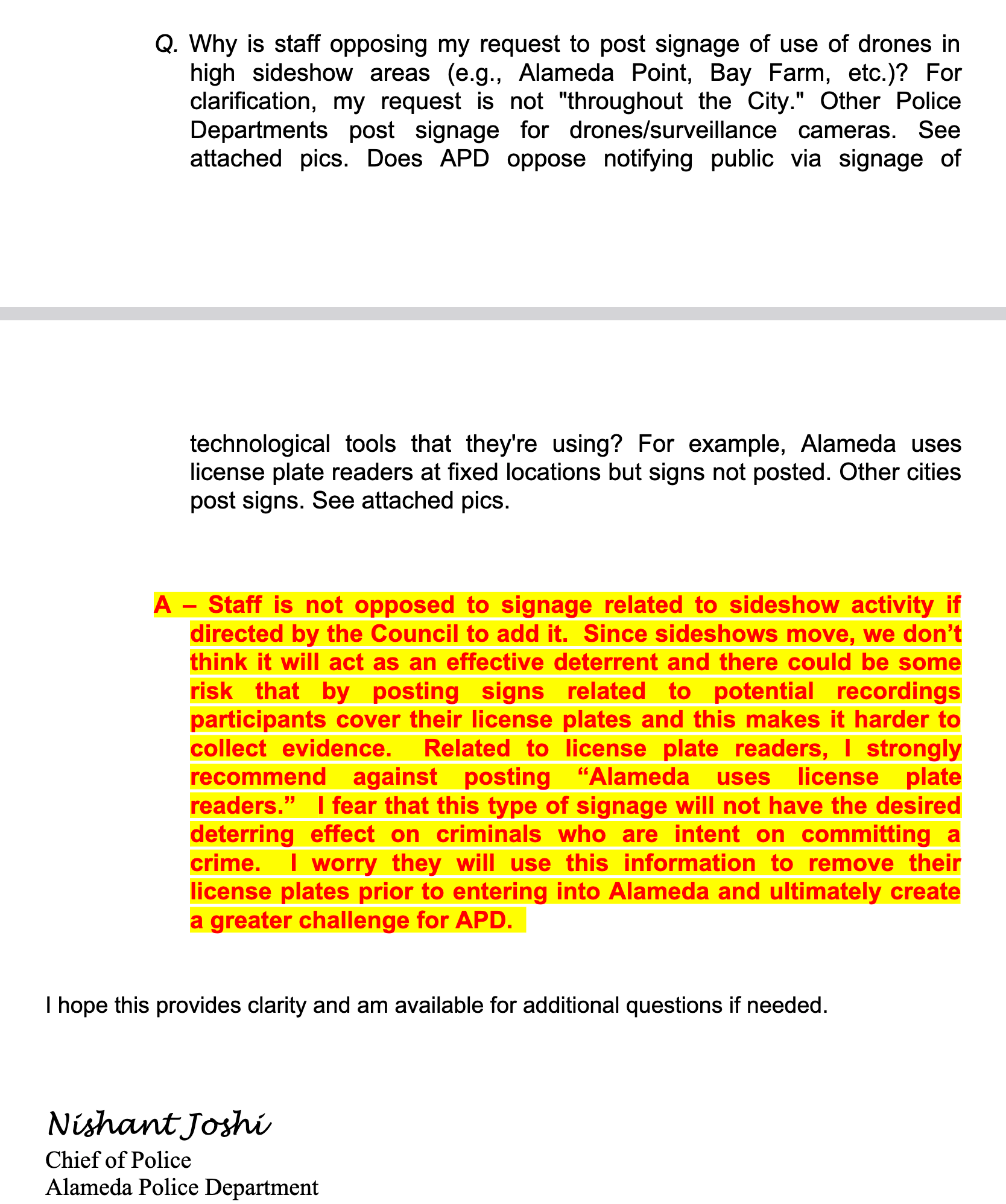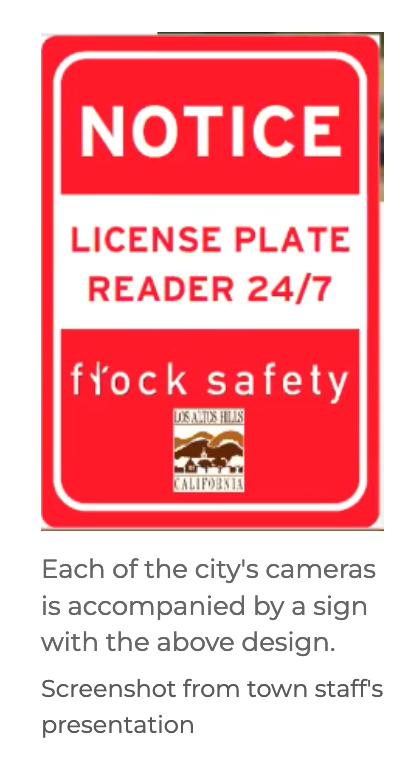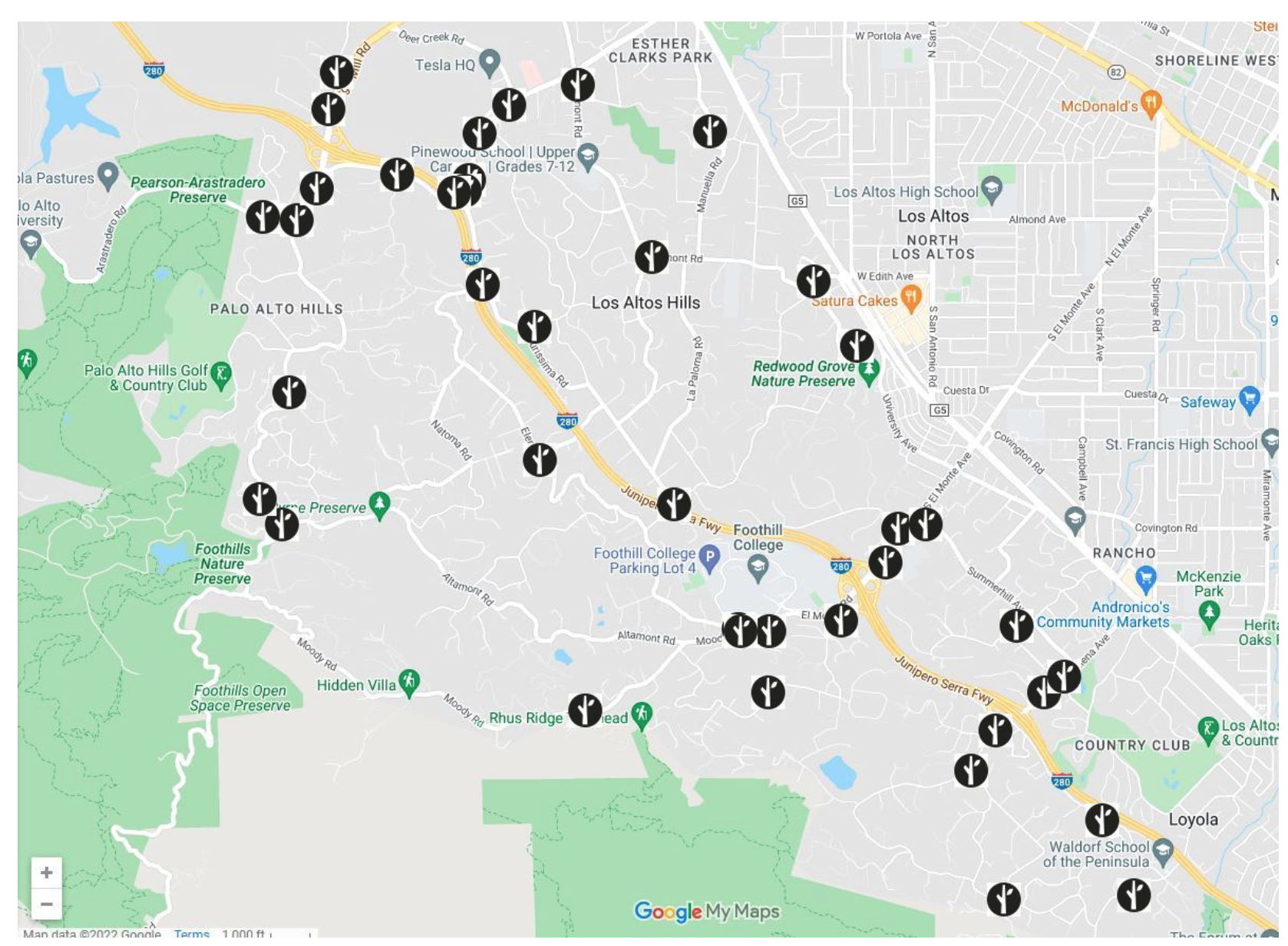In recent years, buying automated license plate readers (ALPRs) has become a certain signal of affluence for Bay Area suburbs.
Flock Safety — which got its start in the Bay Area's Y Combinator startup accelerator selling ALRPs to fearful home-owners associations and is now funded by Andreesen Horowitz's as part of their "American Dynamism" practice — has found "product-market fit" selling these systems to eager suburbs across 40 states.
After Alameda purchased its own ALPRs from Flock, Palo Alto city staff reached out wonder if they could piggyback on the same contract to get some ALPRs for their own jurisdiction.
More recently, the governor's office is paying for 480 Flock cameras to be installed around Oakland and on East Bay freeways. It's no longer just a system for HOAs or suburbs.
These systems are now being used — or claimed to be used — for such a wide range of law enforcement and public safety purposes that it's hard to pick a specific aspect to debate anymore. To be frank, I can understand why the governor's office and the CHP would deploy any and all technologies to address shootings on East Bay freeways, which remain dangerously higher than all other counties in the state. But here within Alameda, I'm more skeptical of the value from these ALPR systems.
Is the point to actually provide a practical tool to the city's law enforcement personnel? (And in that case, are the police actually making productive use of the system? And are they consistently honoring everyone's rights to privacy? Meaty questions that are outside of the scope of this blog post!) Or is the point to send out general vibes of if you commit crimes here, our police will find you, and you look like someone who might commit a crime, so maybe just don't come here!
A recent email exchange between Councilmember Trish Herrera Spencer and Alameda Police Chief Nishant Joshi touches on this distinction: The councilmember asks why there can't be more signage attached to the APLR readers around the city? She wants to notify the public that they are being watched. The police chief responds that the point of the ALPRs is to be discrete and useful — not a visible announcement.

The correspondence packet doesn't include the 6 pictures that the councilmember attached.
She likely included pictures from Piedmont — another Oakland-adjacent customer of Flock Safety.
I'm not sure if she included this example, but let's consider the example of the Town of Los Altos Hills — another Flock Safety customer — since they attach signs to each of their ALPRs:

Los Altos Hills also posts a map on their town website identifying the locations of all the ALPRs:

(In contrast, I had to file a Public Records Act request to get the locations of the ALPRs in Alameda.)
And — in the most telling detail — residents of Los Altos Hills are provided with a form on the town website in case they'd like to opt out their own vehicles.
It's a telling detail because it reveals that the point of the system is to guard against potential outsiders — and to loudly announce its presence — rather than to be a general-purpose tool for legitimate law enforcement practices. It's for deterring thieves coming from outside to steal property, not for — to offer a hypothetical example — providing evidence for a domestic violence case relevant to residents within town limits. (I mention domestic violence because it's unfortunately on the rise since the start of the pandemic, including in Alameda, but gets much less attention as a matter of public safety and well-being than property crime.)
When I read Councilmember Trish Herrera Spencer's email thread with the Police Chief, I'm hearing that she's asking for that — the loud announcement of signs reading Welcome to Alameda! You are being watched!
There are 13 attachments in total to this one agenda item, in addition to the staff report — which is a measure of how much oxygen in City Hall is being taken up by this topic.